- AJ Products IE
- Blog
- Ergonomics in the workplace
- Ergonomist lists: 5 physical health factors that make us feel good in the office

An ergonomist lists different health factors that can make us feel good around the office
What are the physical health factors to consider?
In short, physical health factors are the positive conditions that make us feel good physically. This can be an ergonomic chair, good lighting, or the opportunity to have work adjustments based on specific needs. Health factors make us feel good and perform well when we work. Consistent, long-term, and active use of health factors increases the chance of creating a good work environment and lowering employee sick leave.
Here are Erica von Sicard's list of five physical health factors:
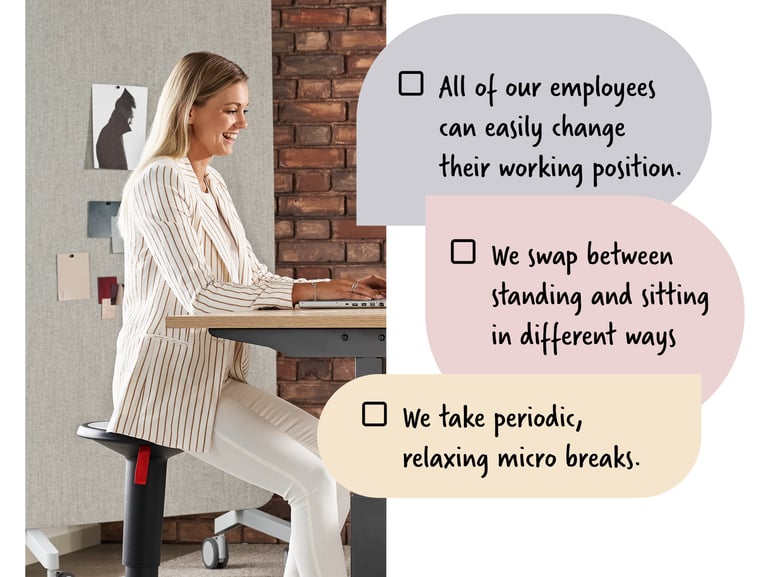
1. Varying your working positions
The body is made to be in motion, and changing work positions is key to a healthier work life. When we move, blood circulation increases, which both improves cognitive ability and makes us more alert. Therefore, it is good to have a workplace where you can both stand and sit – and sit in different ways. And this applies even when parts of the job are done from home, like in hybrid work.
Remember to work centered and use standing mats, document holders, etc., to work relaxed. And don't forget to take micro-breaks sometimes – just to breathe and release tension in the neck and shoulders.
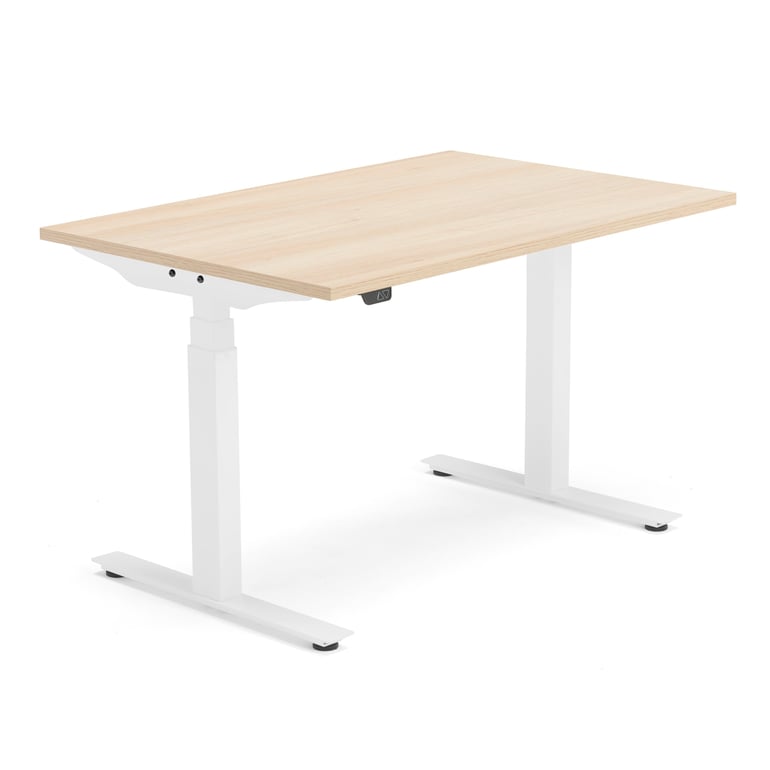
TIP! Height-Adjustable Desks
Switching between sitting and standing work is the perfect way to activate the body during a day at the office – and becomes easier with a height-adjustable desk. The desks come in various colors, shapes, and sizes but have one thing in common: They are an investment in well-being.
Click here to view desks that make it easy to change position
2. A pleasant sound environment
Few things affect work peace as negatively as disturbing noises. And it's not just the work itself that suffers, tensions in the neck and shoulders, and headaches also follow the increased effort to maintain focus. The solution is to decorate with soft materials such as screens, upholstered furniture, carpets, and sound absorbents in ceilings and walls – all to block and absorb sound in the room.
One tip is to create "quiet rooms" for focused work and "chat rooms" for phone calls and video meetings – all to not disturb colleagues.
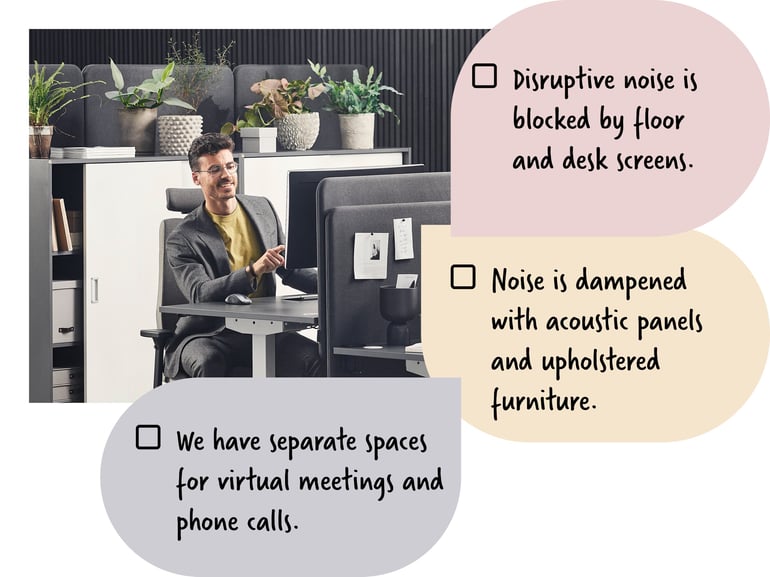
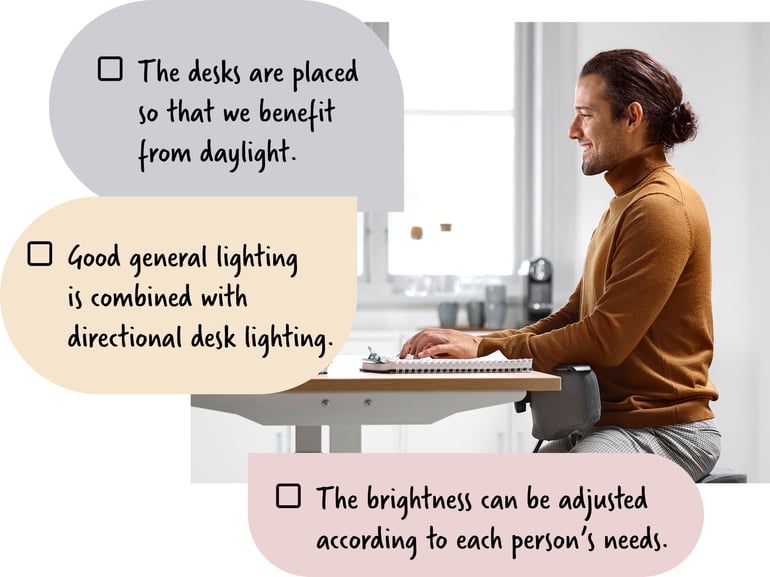
3. Proper lighting
Good lighting is a prerequisite for well-being and helps us both see and work better. Place the desks to take advantage of daylight, without getting reflections on the screens. Remember that ceiling lighting should be even and come directly in front of the body to avoid shadows. Combine with directed desk lighting, which should be adjustable in strength according to the employees' age.
Have the right lighting in the room? The cap test can give answers. Hold your hands above your eyes. If the light feels more comfortable "with the cap on" – then the lighting needs improvement. Tip: Take lunchtime walks during winter, a chance to recharge energy from daylight.
4. Furnish for socialising - but also for alone time
We humans are social beings who thrive on interaction. We can easily enhance positive feelings by having inviting environments where we have coffee breaks, eat lunch, and relax with colleagues. Consider making lounges and lunchrooms mobile-free since we become more open to our surroundings without distractions. A tip is to build camaraderie via playfulness, like having a ping-pong table or something similar.
However, not everyone thrives in open office landscapes all the time. Some may feel uncomfortable and struggle to perform optimally in such an environment which is why alternatives are needed. Ideally, each workspace should be adapted to the individual's needs – which can easily be solved with screens, storage, and the placement of the workspace within the room.
Another tip for uninterrupted work is to schedule a meeting with oneself, a time for complete focus on a task.
Don't forget that colleagues working from home also need a sense of belonging, which is why "virtual coffee breaks" are greatly appreciated.
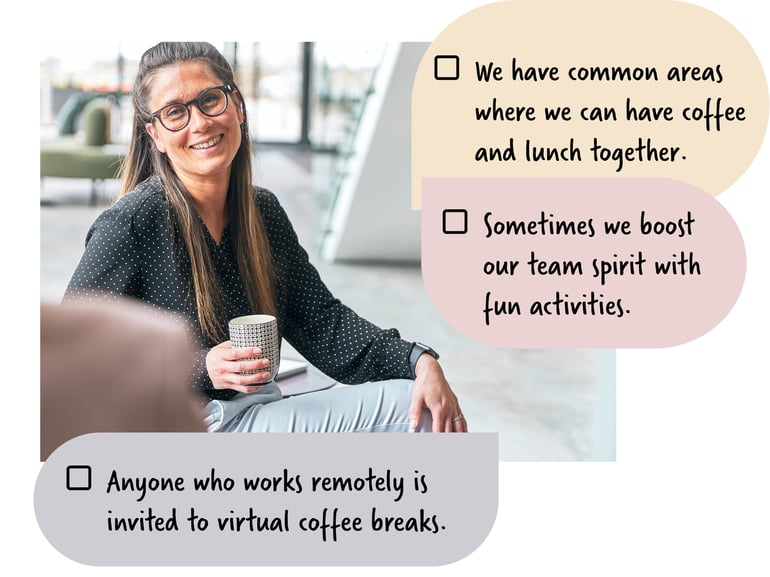
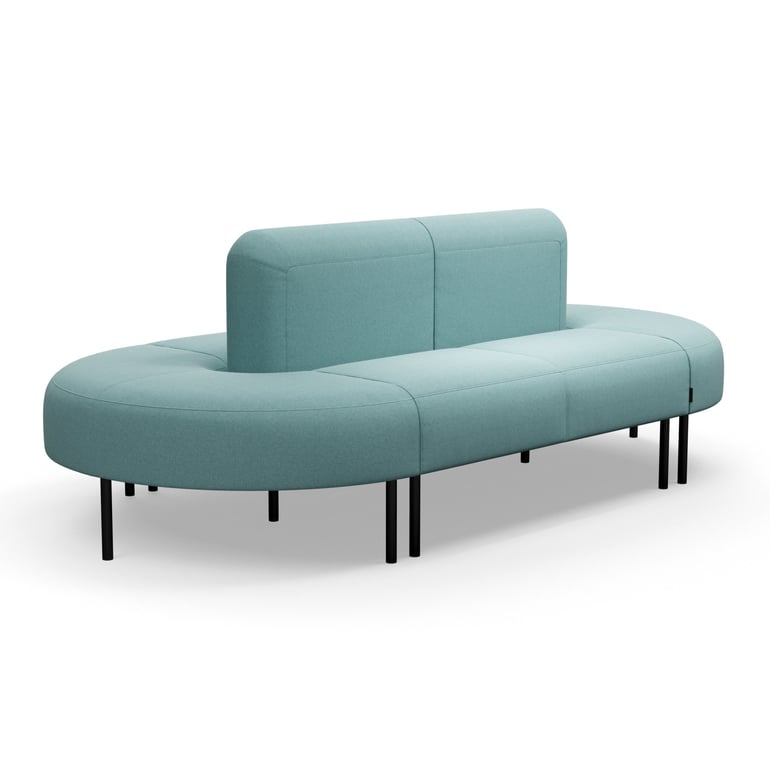
TIP! Sofas for all occasions
A comfortable seat for visitors, an alternative workspace, or the inviting gathering point during coffee breaks? Sofas can serve many functions in the office and come in various styles. What are you looking for?
Click here to view sofas for the reception, office and lounge
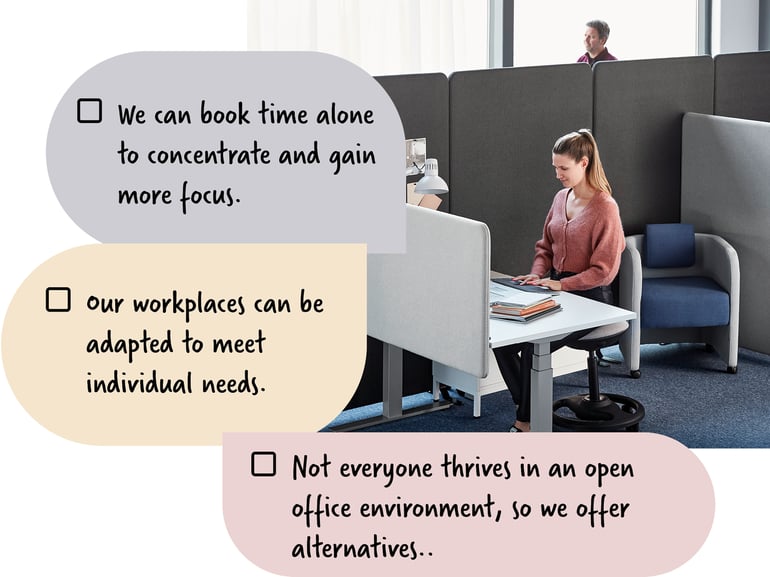
5. Letting People Be Themselves
Not everyone thrives in open office landscapes. Some may feel uncomfortable and struggle to perform optimally in such an environment – which is why alternatives are needed. Ideally, each workspace should be adapted to the individual's needs in terms of having an unobstructed view and other factors – which can easily be solved with screens, storage, and the placement of the workspace within the room.
Another tip for uninterrupted work is to schedule a meeting with oneself, a time for complete focus on a task.
Research on health factors
The Health and Future research project has studied the characteristics of public workplaces with healthy employees, and private companies have also been examined in a similar way to see what makes some workplaces healthier than others. Comparisons have been made between workplaces with low and high sick leave to identify how those with low sick leave have succeeded in reducing absenteeism. The study found that in workplaces with healthy employees, the physical and mental health factors were roughly the same.Learn more about ergonomics
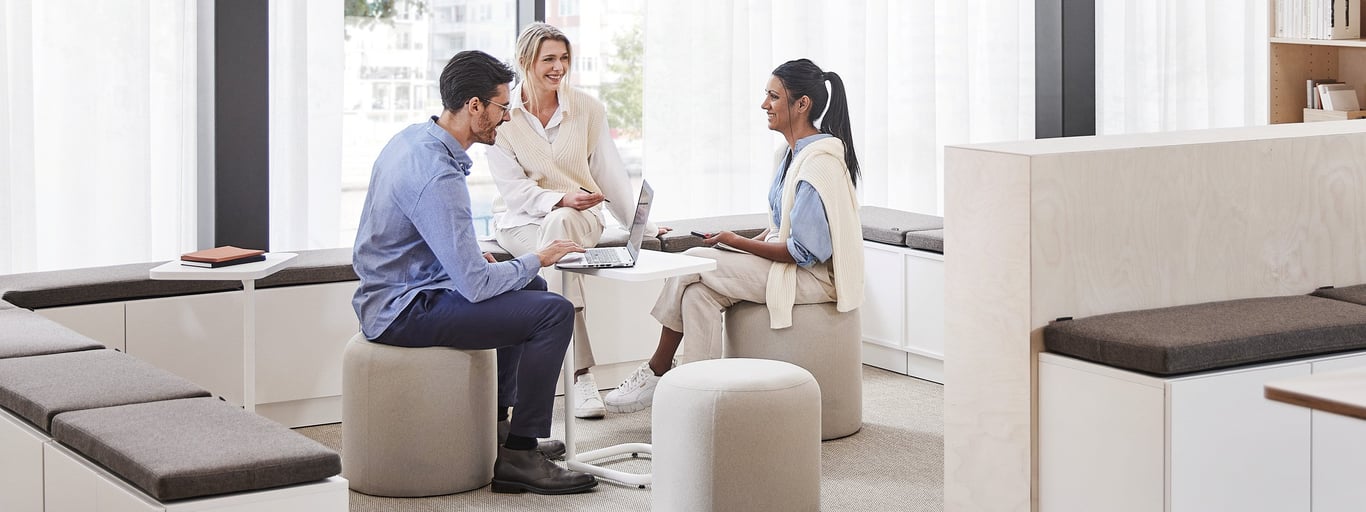
Summary
The blog highlights the importance of considering physical health factors in the workplace to promote employee well-being and sustainable health. Physiotherapist and ergonomist Erica von Sicard has listed some of these factors, including offering varied work positions for increased blood circulation, a pleasant light and sound environment, promoting social interaction with shared spaces, and plenty of storage options for a comfortable, tidy work environment. Studies also show that workplaces that focus on physical and mental health factors have healthier staff with fewer sick leave days.Ask us!
If you need help furnishing your workplace, feel free to contact us. Our project sellers have extensive knowledge of workplace design and are happy to help!FAQ
- A positive work climate with good ergonomic conditions, a pleasant sound environment, mutual respect, and clear leadership are strong contributing factors to employees' well-being, satisfaction, and thus better performance.
- A healthy workplace is a place where everyone working has good opportunities to feel good both physically and mentally and thus perform in their work.
- Erica von Sicard is a studied physiotherapist and ergonomist
- Mental health factors are about mental health and well-being. Examples include good social relationships, recovery, and security.
- Risk factors include stress, high noise levels, poorly designed workplaces, and lack of information and security.